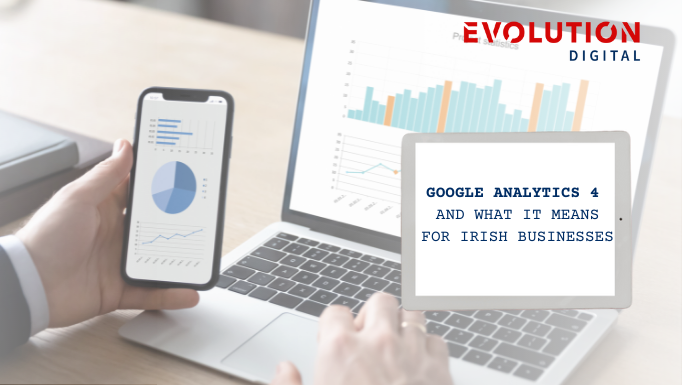The recent announcement that Google intends to sunset Universal Analytics in July of next year is a watershed moment in digital marketing history. Back in 2013 when Google mandated the upgrade to Universal Analytics very little changed. It was the same metrics, the same measurement model but with a slightly altered interface and a new tracking code. It was, for all intents and purposes, a very simple and seamless change. With GA4, Google is completely revamping how web analytics data is collected, measured and presented and as such the switch this time will be a much bigger bump in the road.
GA4, Universal Analytics? What’s the difference?
Arguably the most important difference between Universal Analytics and the new and improved Google Analytics 4 is a switch away from the old “session” based data model to an event driven data model. What this means in practical terms is that a lot of the old metrics you may have used to measure performance such as bounce rate or Goal conversions are gone. In their place will be new metrics such as User Properties and Event Parameters. The goal of this switch is to give you a better understanding of how “users” interact with your website, as opposed to the old session based model that measured how traffic interacted with your site.
Google Analytics 4 also has some great new tools for Irish businesses to leverage including new predictive conversion measurement and predictive audience performance tools, as well as new and improved metrics such as engaged sessions. With GA4, Google is also going “cookieless”, in a move that will both preserve user privacy and your marketing data. As the internet becomes more “privacy centric” this new method of collecting data is a huge bonus for any business that relies on web analytics data to drive revenue or enquiries.
Google Analytics 4 Integration
Arguably the biggest downside of the switch to GA4 comes with the actual transition, for a number of reasons. For starters, there is a lot to get used to in terms of the new interface, the new metrics and what they actually mean for your business. In addition to this, Google has presented us with another headache when it comes to accessing our historical data through the old Universal Analytics. In July of 2023 Google will stop processing data in all Universal Analytics accounts and the old data will only be available for a further 6 months. This means businesses will be faced with the loss of many years worth of performance data.
Practical Steps To Prepare For GA4
To start with, we all need to bear in mind that now is not the time to panic. This change is coming, we have been warned, and now we need to lean into it so that when the switch comes in 2023 there won’t be any nasty surprises. The first thing you need to do is get the new analytics installed. Ideally, you want to have everything in place before July 2022 so that you can measure year on year performance. The second thing you want to do is spend some time using the new platform. Learn to use the new metrics and understand how they can benefit your business. GA4 can be run in conjunction with Universal Analytics so you still have the old familiar analytics in place while you make the transition.
Finally, we strongly advise all businesses to start making a plan for when Universal Analytics is retired completely. The data in Google Analytics can be exported to Excel and Google sheets. We would recommend looking now at what metrics you regularly use to measure your current performance against past performance and ensure that this data is exported and accessible for future analysis.
As a full-service digital marketing agency, we here at Evolution Digital can help you not only with making a smooth transition to GA4, but also in areas such as social media, SEO, Google ads, and email marketing.
Get in to touch with us today for a free consultation, or call us on +353 (0)1 288 5118.

